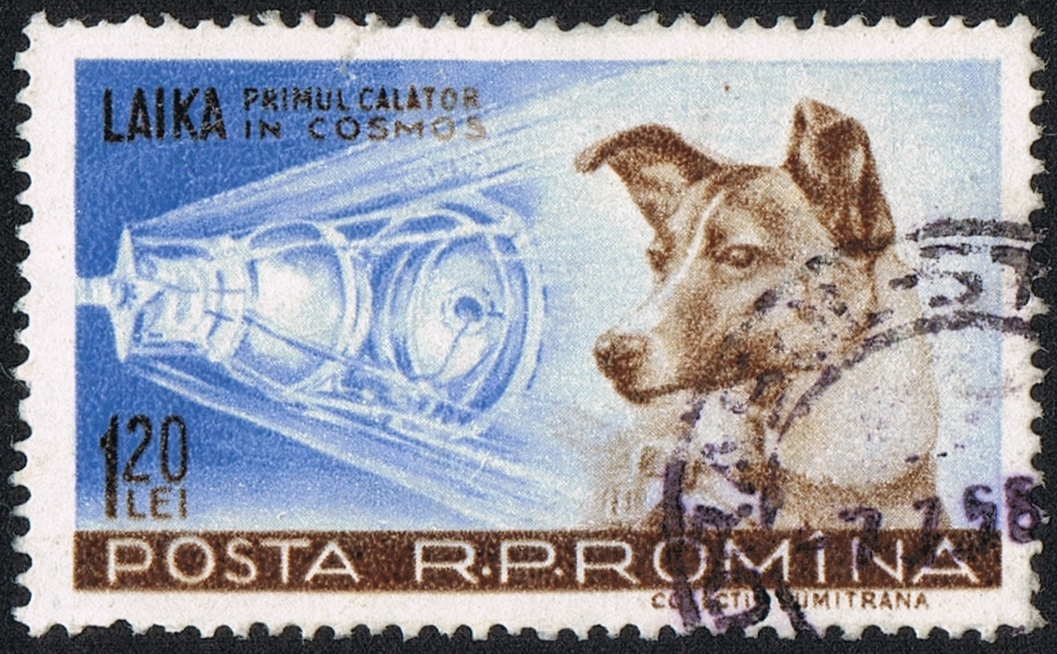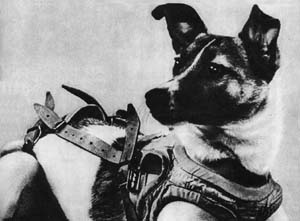Animal astronauts

Meet Laika – the first animal in orbit – and the other 9 space pioneering species that paved the way for human spaceflight.
Padding through the streets of Moscow, Laika – a mongrel – was plucked from obscurity to stardom. Soviet scientists reasoned that since she was capable of withstanding extreme cold and hunger as a stray dog, she would be able to endure a rigorous training schedule, which would prepare her for a trip to space in 1957.
Before being confined to the capsule – essentially a metal ball weighing around 18 kilograms – Laika’s fur was sponged with a weak alcoholic solution and iodine was painted onto the areas where sensors would be placed to monitor her bodily functions.
There were no plans to retrieve Laika from space, and she died several hours into the flight from stress and excessive heat – causes that were kept a secret for 40 years. Her ship, Sputnik 2, circled the Earth 2,570 times before burning up in the Earth’s atmosphere.
In 2008, a monument was erected in Laika’s honour, outside the Moscow facility where she was trained. But although she was the first into orbit, she was far from the first to leave our atmosphere. So read on and explore our list of the many species that left our planet before we managed it ourselves.

1. Fruit flies
On board a captured Nazi V-2 rocket in 1947, these tiny pests made history. They were the first animals in space, sent to explore the effects of radiation on organisms. They returned to Earth safely by parachute.
2. Mice
Even today, mice are ferried to and from the ISS and are key for studies in sending humans to Mars. Recently, it was discovered that astro-mice sent to deep space showed signs of liver damage.
3. Dogs
During the 1950s and 1960s, dogs were used by the USSR to investigate whether human spaceflight was feasible. The Soviets chose canines believing they could cope with the stress of the experience better than other animals.
4. Geckos
Russian scientists sent lizards to space to study how weightlessness affects reproduction. When one wriggled free of its identification collar, the geckos were filmed playing with the floating object – a rare behaviour for reptiles.
5. Cats
In 1963, the very first feline was sent into space by French scientists. The cat, known as Félicette, had electrodes implanted in her brain in order to record impulses sent back to Earth.
6. Rats
Love them or hate them, we’re physiologically similar to rodents. That’s why a team of ‘ratstronauts’ are currently being used to study how microgravity affects organisms during long stays in space.
7. Tortoise
The very first tortoise was launched into space in 1968 with wine flies and mealworms. They flew around the Moon and back to Earth, making them the first animals to enter deep space. What’s more, they survived the trip!
8. Cockroaches
Cockroaches conceived on board the International Space Station were found to grow faster, run quicker and were much tougher than those born on Earth. Perhaps it’s time to welcome our new insect overlords.
9. Jellyfish
What do humans and jellyfish have in common? We both orientate ourselves according to gravity. NASA raised thousands of the critters in space to test the effects and found the astro-jellies couldn’t swim in normal gravity back on Earth.
10. Monkeys
A total of 32 monkeys have flown to space, beginning with Albert II in 1949. A decade later, a rhesus and a squirrel monkey became the first to survive the trip, experiencing over 30 times the pull of Earth’s gravity.

This article was originally published in How It Works issue 88, written by Gemma Lavender
For more science and technology articles, pick up the latest copy of How It Works from all good retailers or from our website now. If you have a tablet or smartphone, you can also download the digital version onto your iOS or Android device. To make sure you never miss an issue of How It Works magazine, subscribe today!




